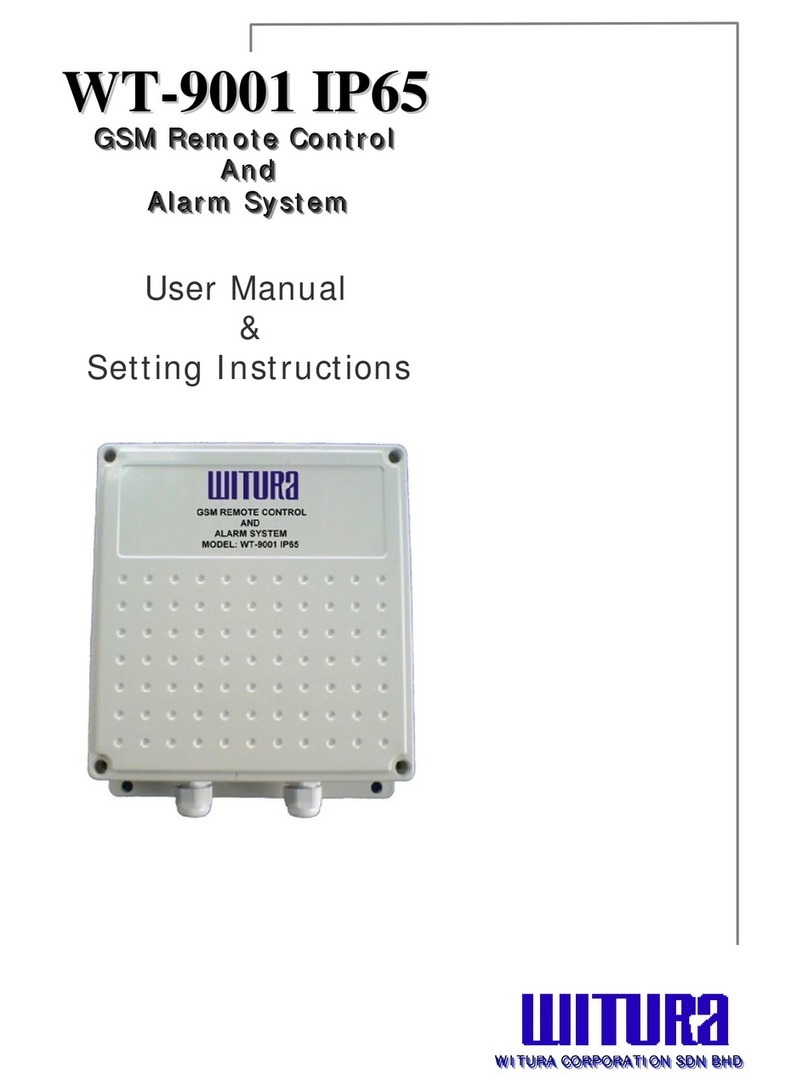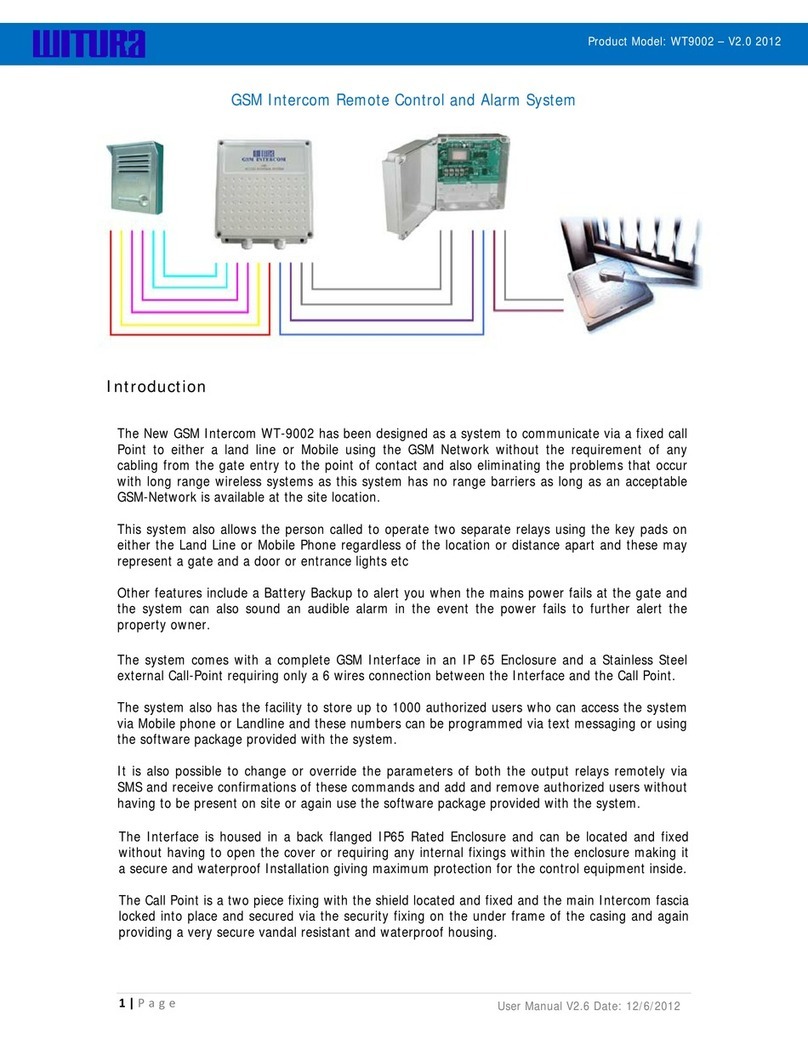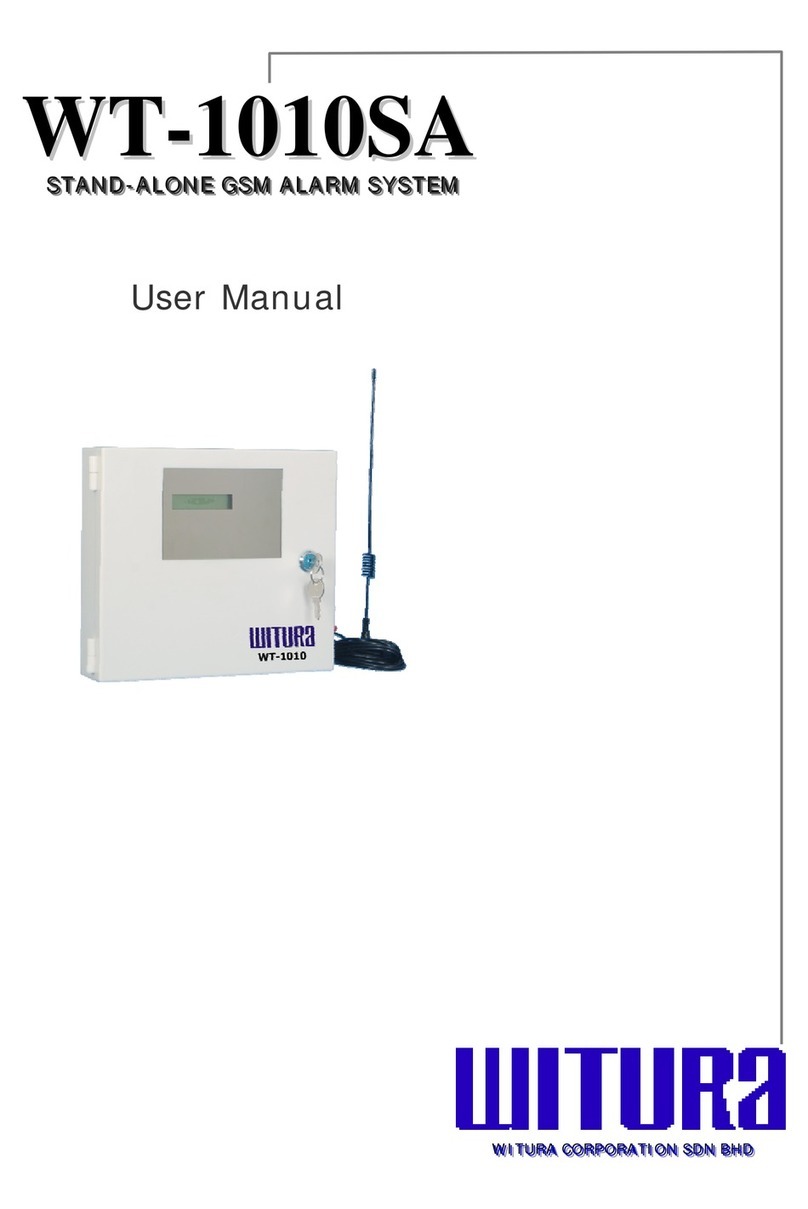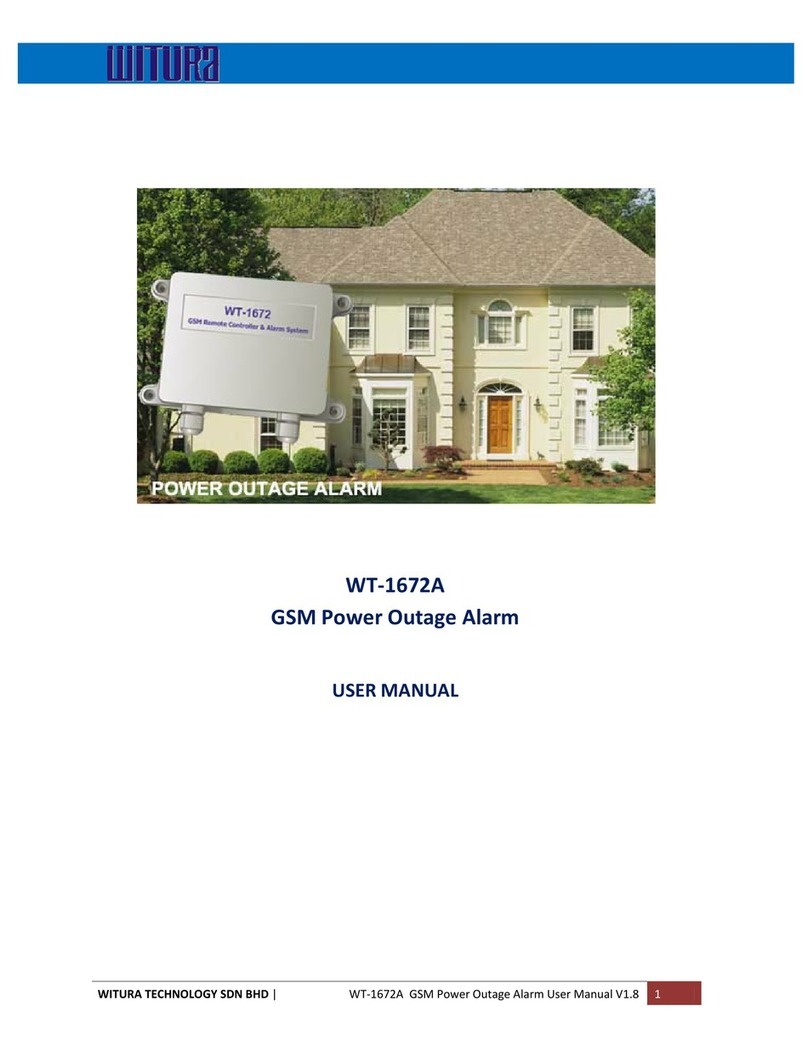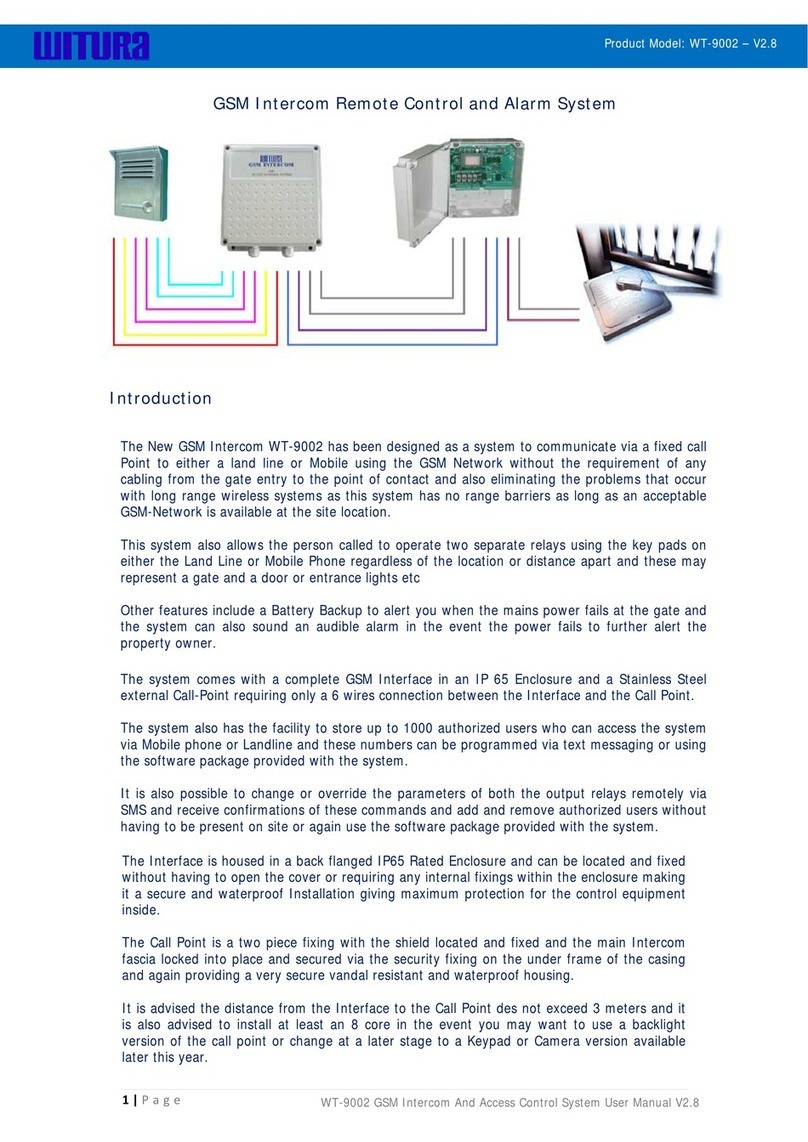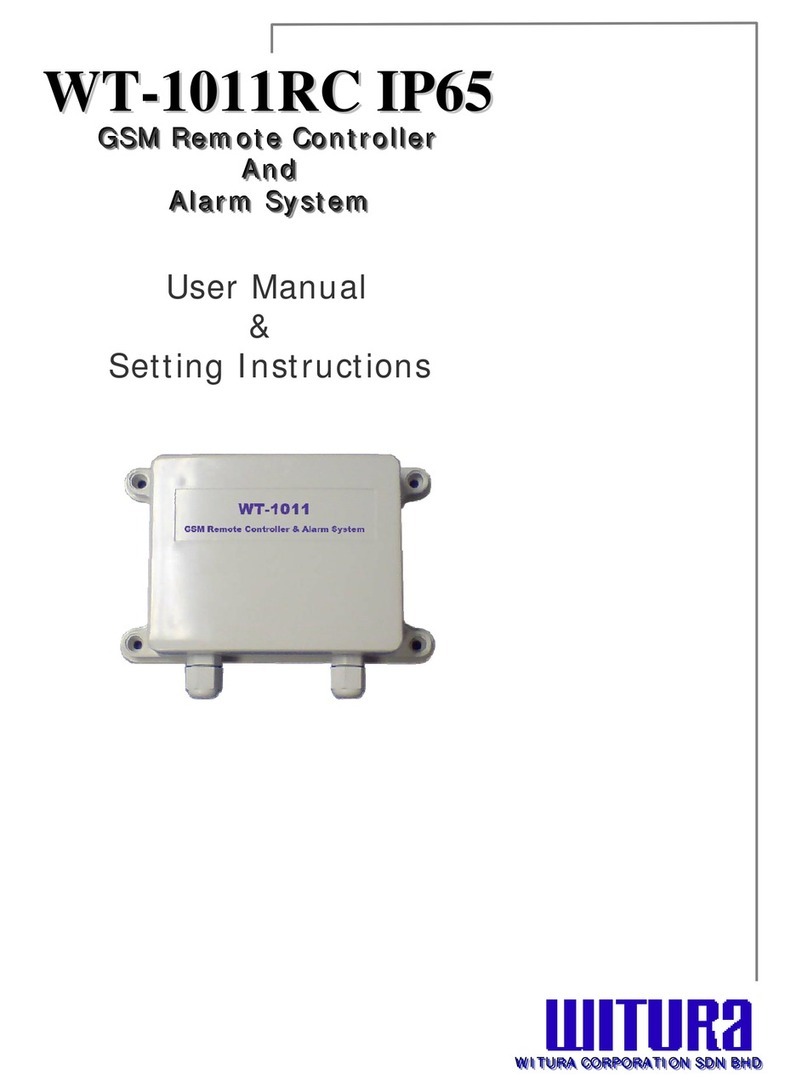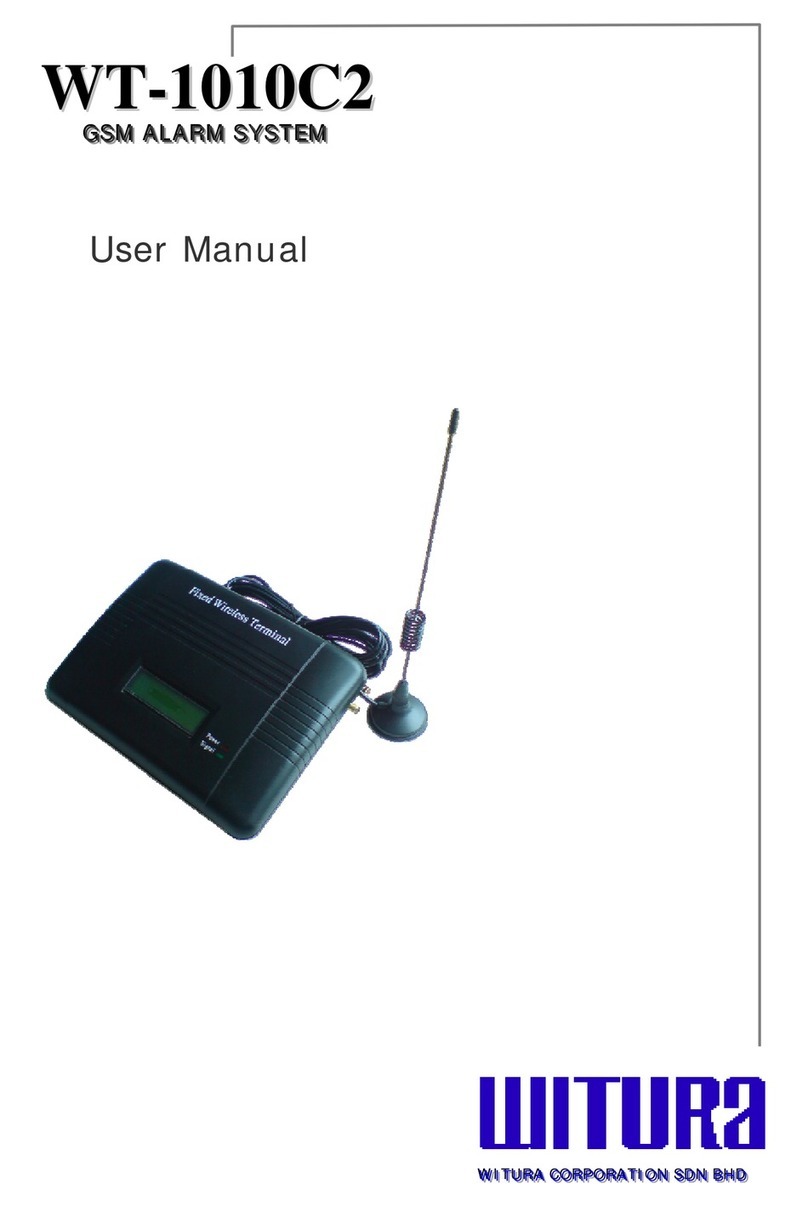
-
Please check the following packing list:
Name Quantity Unit
WT-1010C2 Main Unit 1 set
Telephone line 1 set
DB15 (F) cable 1 set
Power adapter 1 set
5m GSM terminal antenna 1 set
User’s Manual 1 set
Contents
1. Introduction to WT-1010C2 GSM Alarm System………………………………………………………………….….5
2. Main Features of the WT-1010C2….………….………………………………………………………………………………6
3. Installation Instruction...............................................................................................7
3.1 Description………………………………………………………………………………………………………………………….7
3.2 WT-1010C2 Inputs & Outputs Wiring Instructions…………………………………………………………..8
3.3 Installing the SIM Card……………………………………………………………………………………………………...9
3.4 Power up the WT-1010C2……………………………………………………….…………………………..…………...9
4. WT-1010C2 Configuration Instructions (Via Voice)……………………….……………………………………..11
5. WT-1010C2 Configuration Instructions (Via SMS)………………………….…………………………………….26
5.1 Setting the Recipient that will receive Alert Message…………………………………………………….26
5.2 Setting the Access Control for Administrator………………………………………………………………….26
5.3 Time Setting…………………………………………………………………………………………………………………….27
5.4 Turn Off the feature of Password Request when Accessing the System……………………….28
5.5 Setting the Account Number for Event Reporting……………………………………..………………….28
5.6 Setting the Burst On and Burst Off time of DTMF tones……………………………………………….29
5.7 “PSTN Fail” Settings…………………………………………………………………………………………………………29
5.8 “AC Fail” Settings…………………………………………………………………………………………………………….31
5.9 “Auto Test” Settings………………………………………………………………………………………………………..33
5.10 Input Settings.……………………………………………………………………………………………………………….35
5.11 Output Settings……………………………………………………………………………………………………………..38
5.12 Setting the Waiting Time for Engaged Call…………………………………………………………………..39
5.13 Programming the Area Code into WT-1010C2….…………………………………………………………39
5.14 Setting for Adding Area Code when Transmitting the Alarm………………………………………40
5.15 Setting the Delay Time of Transmitting the Alarm………………………………………………………40
5.16 Setting the Alarm Time for Audible Alarm……………………………………………………………………41
5.17 Miscellaneous Settings………………………………………………………………………………………………….41
6. Digital Communication Standard – Contact ID Protocol for WT-1010C2…………………………….44
7. Technical Specifications............................................................................................47
4
COPYRIGHT ©2008 WITURA CORPORATION SDN BHD
